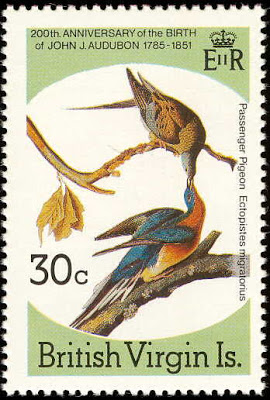When a creature becomes extinct, we are left with whatever essence of its existence can be conveyed through science, art and the written word. In the case of the passenger pigeon (Ectopistes migratorius), a prolific and gregarious migratory bird of North America’s eastern and central forests, we’ve been trying to preserve it in memory for a century now. This year marks the 100th anniversary of the passenger pigeon’s extinction. The species’ four-decade decline from billions upon billions to none concluded when a captive bird named Martha died in her cage at the Cincinnati Zoo on Sept. 1, 1914. Martha’s remains were packed in a 300-pound block of ice and shipped to the Smithsonian National Museum of Natural History, where she was stuffed and mounted. Last week, the Smithsonian opened an exhibit on the passenger pigeon and other extinct North American birds and put Martha on display for the first time since 1999.
Skillfully crafted taxidermy mounts of passenger pigeons, such as Martha, continue to convey the bird’s superficial resemblance to the still-plentiful mourning dove, while documenting notable differences in size, plumage and eye color.
The red-eyed passenger pigeon was 50 percent larger and considerably more colorful than the brown-eyed dove. The bird’s size and abundance made it an important source of food for humans. Male passenger pigeons, following the evolutionary dictum that favors bright plumage to attract females, bore copper-colored breast feathers and enough slate-blue feathers on their heads, backs and wings for the birds to sometimes be called “blue pigeon.”
The bright male vs. the drab female dichotomy is well captured in the portrait of the passenger pigeon that John James Audubon painted in Pittsburgh in 1824. The subjects of this life-sized work appear perched on adjacent bare tree branches, with the female feeding the male.
Read more: http://www.post-gazette.com/opinion/2014/06/29/The-great-extermination-…

- Login om te reageren
